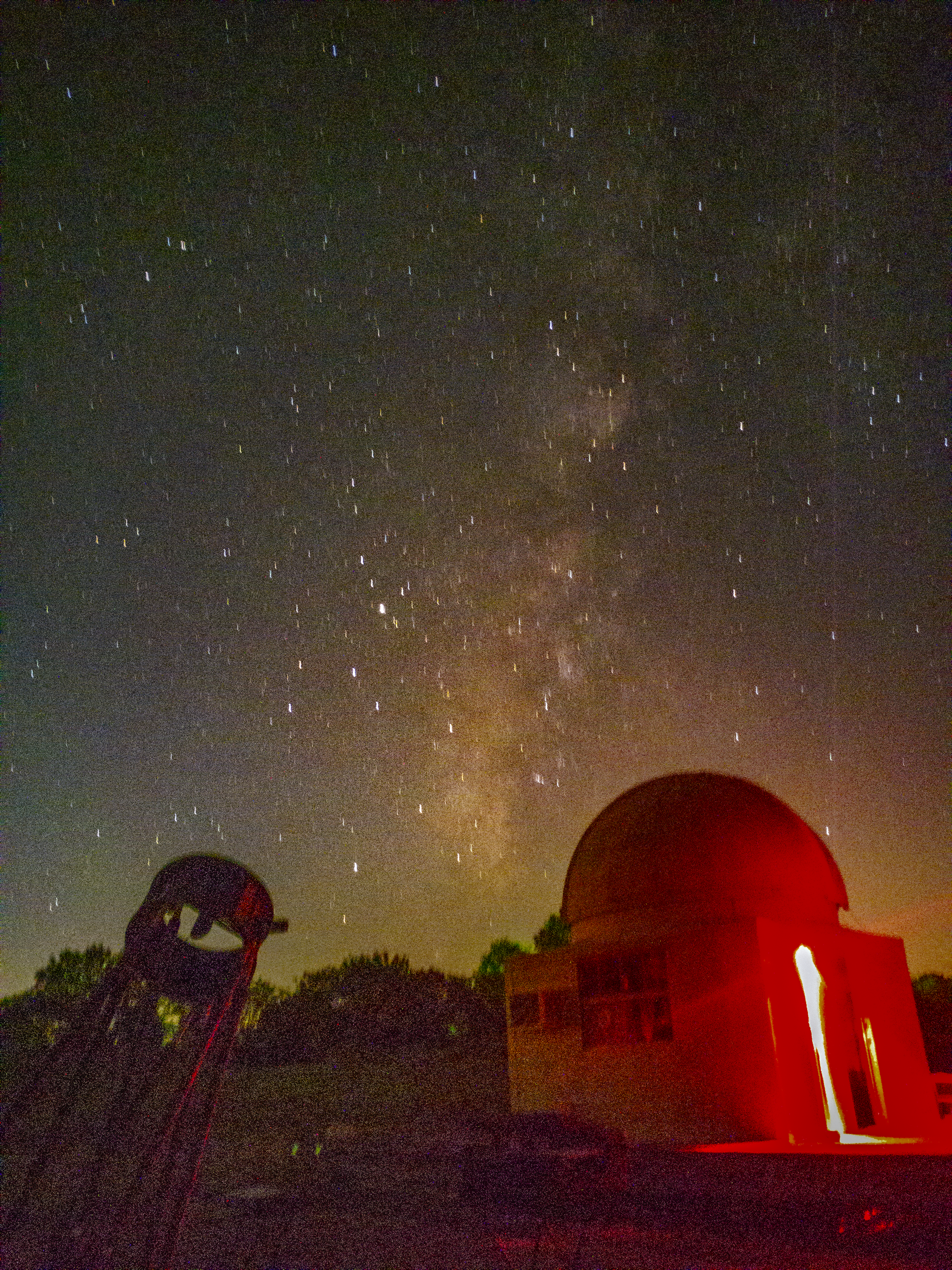
I spent most of today in Houston, just enjoying the day with my wife. The day was nice, but partly cloudy all day and I had no real plans to observe tonight. We got home about 6:15pm and while we were trying to decide when and what to eat for supper, I checked my email. While I was browsing, a new message from Mark (one of our astronomy club members) popped up. The clouds were supposed to clear out by sunset and he had decided to host a spur-of-the-moment star party out at his observatory for all club members who could make it.
Despite being a bit tired and hungry, I couldn't pass this up. Mark's observatory was only about a half hour drive from my house, but was in fairly dark skies. I looked at my watch. Sunset was in less than an hour and it would take me 20-30 minutes to pack the 20" Obsession in the back of my car, so I better hurry.
I quickly packed up the scope and headed out, arriving at the observatory right as the sky was beginning to get dark. Besides Mark, four of us were able to make it to the star party. The seeing wasn't great to start with, but the sky transparency seemed decent.
One thing was very obvious to me as I made the finishing touches on setting up the large telescope -- the sky was a lot darker here. By 8:15pm, the twilight sky was already reveealing more stars than I could see at midnight from my driveway. By 9pm, the Milky Way could be seen stretching from horizon to horizon, all the way from Sagittarius to Perseus.
First on my list were Jupiter and Saturn, of course. I didn't spend a lot of time on either of them since they are easily visible from home. The Great Red Spot on Jupiter was bright and obvious, but the wavering atmosphere made the views a bit disappointing. Likewise, in moments of good seeing, Saturn looked fabulous, but most of the time it was wriggling mess. Hopefully things would settle down later.
I didn't have time to print up an observing list, so I just opened my Pocket Sky Atlas and began scanning various constellations to see what I might be able to find. Along the way, I gave some of my favorite Messier objects a look as well.

Pegasus was rising nicely in the southeast, so I pointed the telescope to that region of the sky and consulted my star atlas. There were a few galaxies listed that I knew I hadn't seen yet. That would be as good a place as any to start.
| NGC 7448 | Pegasus | Spiral Galaxy | 9:00pm CDT |
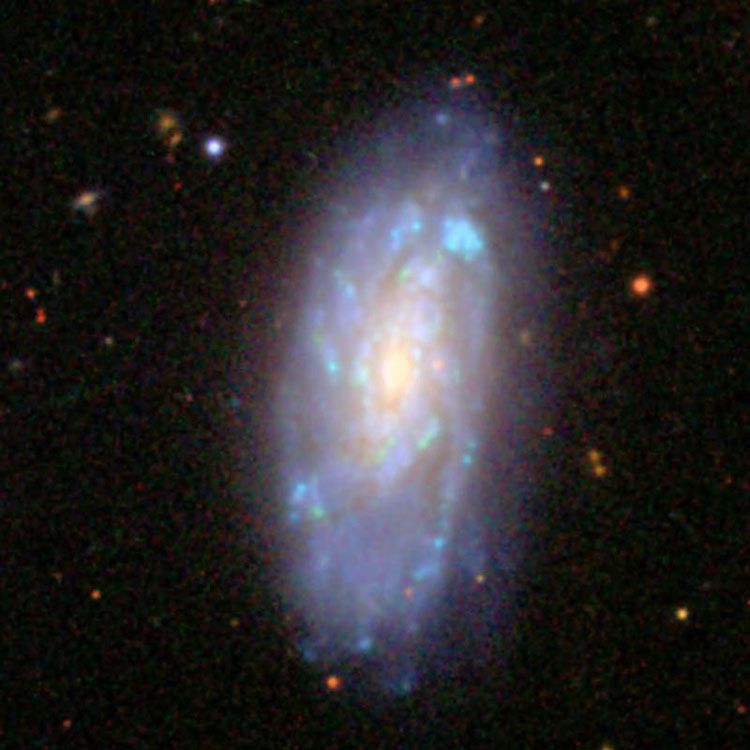 |
Even in the 20", this is rather faint. It is definitely oval in shape, with a brightening in the middle, although I could not detect a stellar core. With averted vision, there are perhaps hints of some mottling. |
||
| NGC 7662 (Blue Snowball) | Andromeda | Planetary Nebula | 9:30pm CDT |
 |
The Blue Snowball lived up to its name. At 348x, it appeared as a bright blue fuzzy ball, densest in the center. Not many details could be seen within it, but it wasn't quite round. |
||
| NGC 7814 | Pegasus | Spiral Galaxy | 9:45pm CDT |
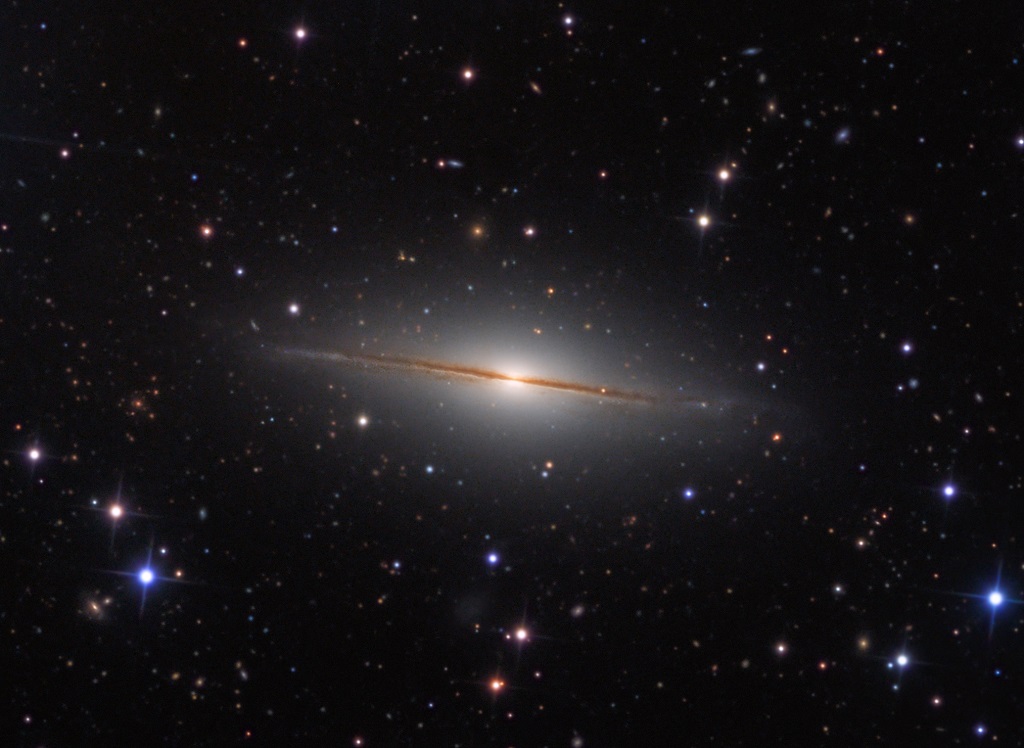 |
This galaxy is fairly faint in the 20". It has a slightly irregular appearance. One end seems to be a little brighter than the other. With averted vision, it appears a little mottled. |
||
| M 11 | Scutum | Open Cluster | 10:00pm CDT |
 |
At 348x, this cluster nearly filled the field of view. The rich cluster contains several dozens of stars forming a roughly diamond-shaped pattern. The brightest member appears yellow. |
||
| M 27 (Dumbbell Nebula) | Vulpecula | Planetary Nebula | 10:30pm CDT |
 |
This planetary nebula looked fantastic at 139x. To me, it closely resembled a cube-shaped cloud, with some sides being denser than others, which gave it a 3D appearance. Within the nebulosity, a few foreground stars could be seen. Right near the the middle was a faint star, which was perhaps the nebula's central star. |
||
| M 57 | Lyra | Planetary Nebula | 10:45pm CDT |
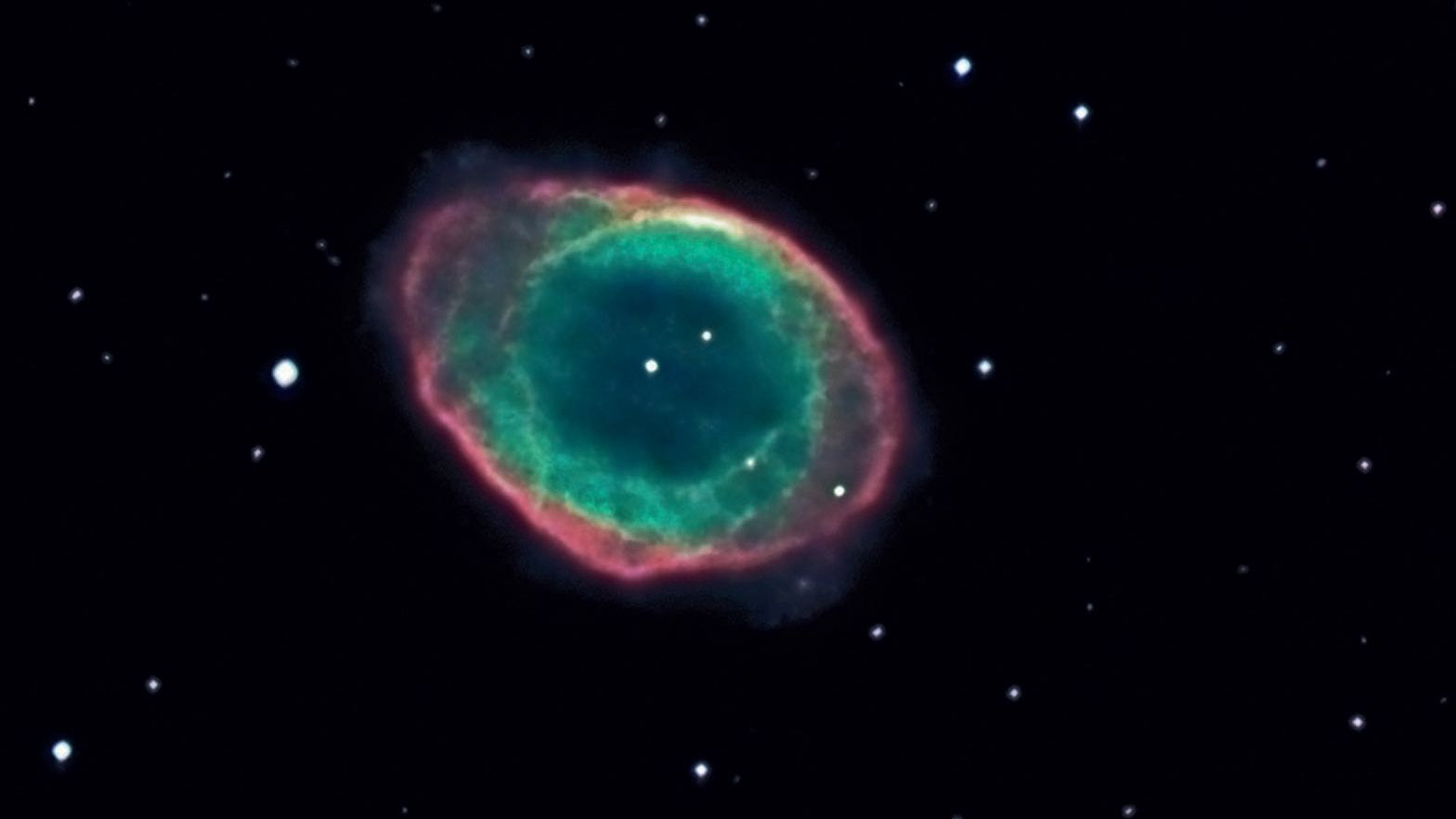 |
I am used to this object appearing as a wispy smoke ring in space. At 348x in the 20", however, it looked more like an eye, as the outer shell became more visible. I was unable to make out the central star, but I was able to make out a lot of detail on the nebula and the nebulosity across the middle was fairly bright as well. Removing the barlow made the object appear brighter and a bit of red and green could be detected near the outer edges. |
||
| M 76 (Little Dumbbell) | Perseus | Planetary Nebula | 10:55pm CDT |
 |
This planetary was roughly shaped like M 27, but had a more distinct apple core or dumbbell shape. I cranked up the magnification to 348x and it looked a bit like a peanut. |
||
| M 33 (Triangulum Galaxy) | Triangulum | Spiral Galaxy | 11:00pm CDT |
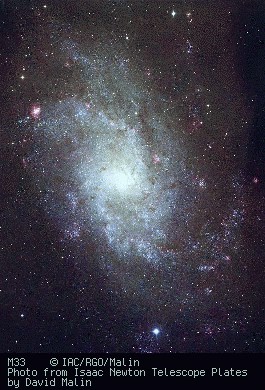 |
Although faint, the core of this large spiral galaxy was easily visible with direct vision. The background around the core appeared mottled and with averted vision, hints of the spiral arms could be detected. |
||
| NGC 604 | Triangulum | H-II Region | 11:00pm CDT |
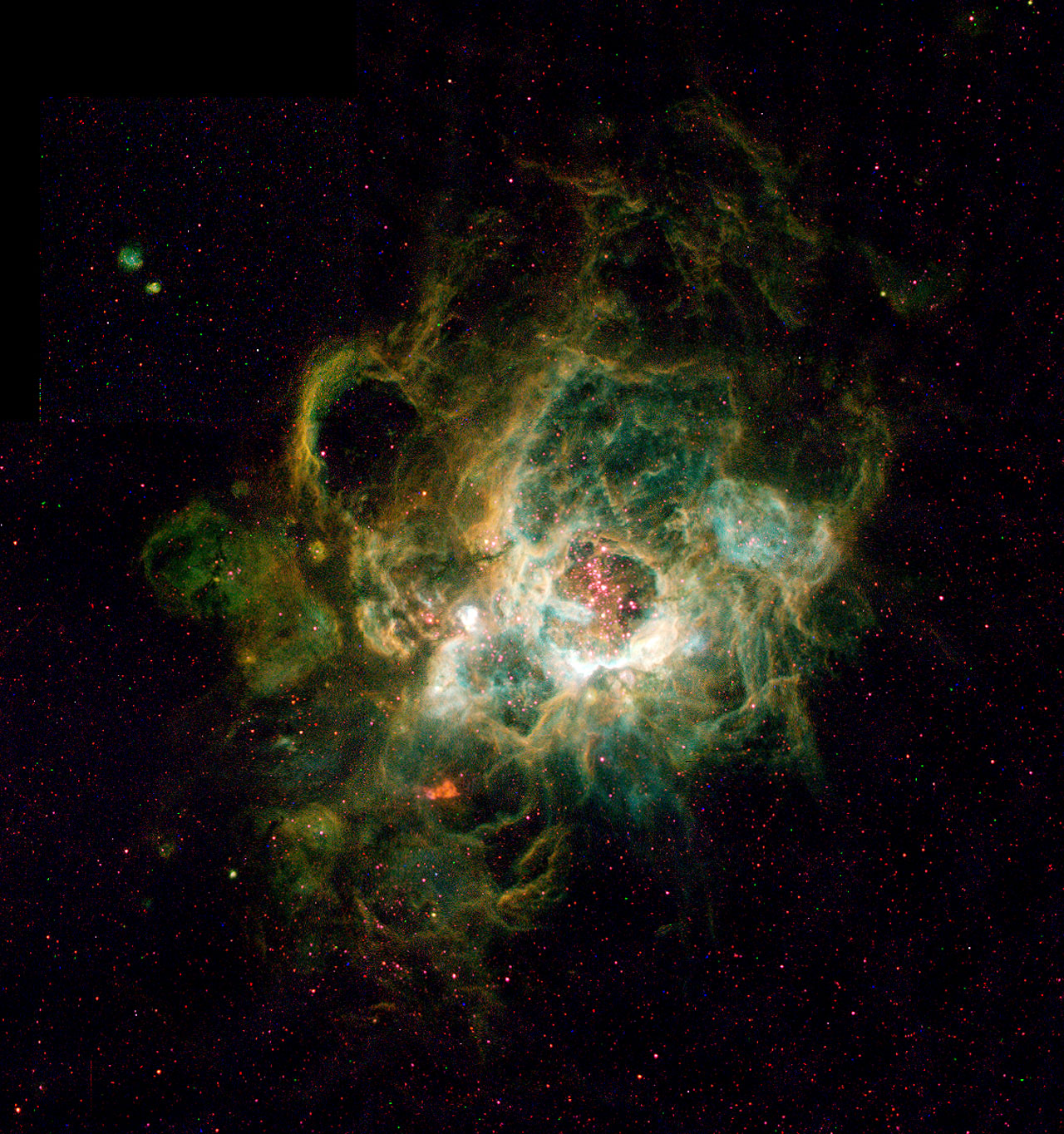 |
Near the outside edge of M 33, I spotted a fuzzy, condensed patch of stars near a brighter foreground star. After consulting a detailed star chart, I was able to confirm that this was in fact an H-II star-forming region within the spiral arms of the Triangulum Galaxy! |
||
At this point, I was beginning to get tired from climbing up and down the ladder to the eyepiece. I decided to take a break and snap a few photos of the glorious sky.
As my body began relaxing, I realized how tired I was getting. It was time to pack things up and head home, even though I hated the thought of leaving this beautiful sky behind. What a great end to a busy Saturday!